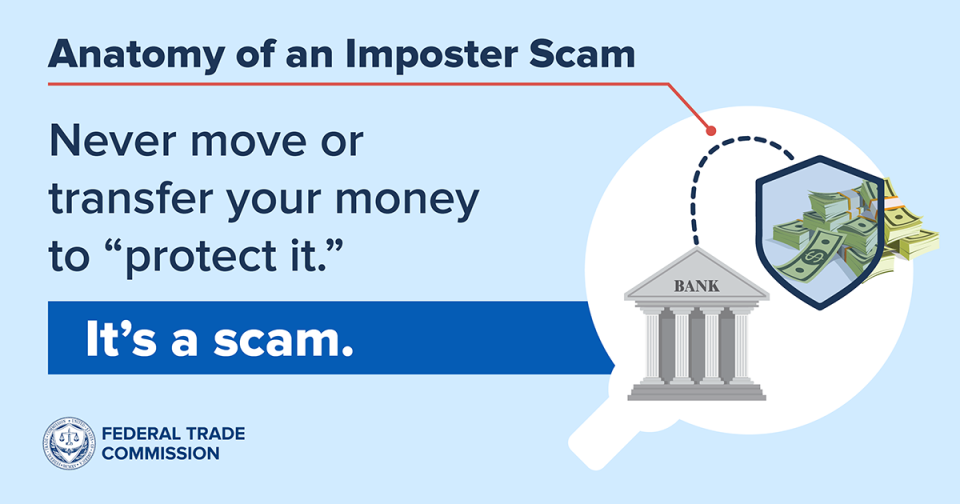People are losing big money to scammers running complicated scams. The scams usually involve someone supposedly spotting fraud or criminal activity on one of your accounts, offering to help “protect” your money, sometimes asking you to share verification codes, and always telling you to move money from your bank, investment, or retirement account. And every bit of it is a scam.
To help protect people you care about, and their life savings, share this advice on how to stop these scammers in their tracks.
Never move or transfer your money to “protect it.” Your money is fine where it is, no matter what they say or how urgently they say it. Moving it means you’ll lose it, not protect it. Someone who says you have to move your money to protect it is a scammer. Period.
Never share a verification code. Ever. Banks use these codes in online banking to prove you’re really you. If you share that code, the scammer can use it to prove they’re you. No caller — especially someone from your bank’s fraud department — will ever ask for the verification code. That’s always a scam.
Stop and check it out. If you’re worried, call your real bank, broker, or investment advisor. Use the number you find on your statement — never the number the caller gave you, which will take you to the scammer.
Report it. If you get a call like this, tell your bank or fund right away. Especially if you moved money or shared a verification code. Then tell the FTC: ReportFraud.ftc.gov.
Scammers keep switching stories and making the scam more complicated. And if you think your bank or investment fund will protect you, think again. To help give you the tools to spot this scam and protect your savings, we’re kicking off a series to break down the anatomy of this scam. Watch this space and keep spreading the word.







Comments